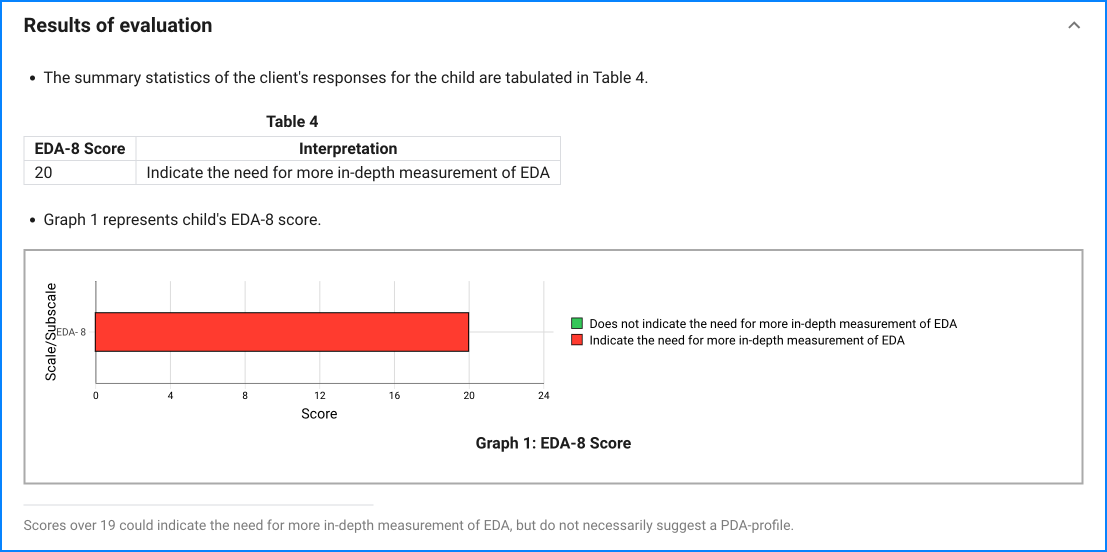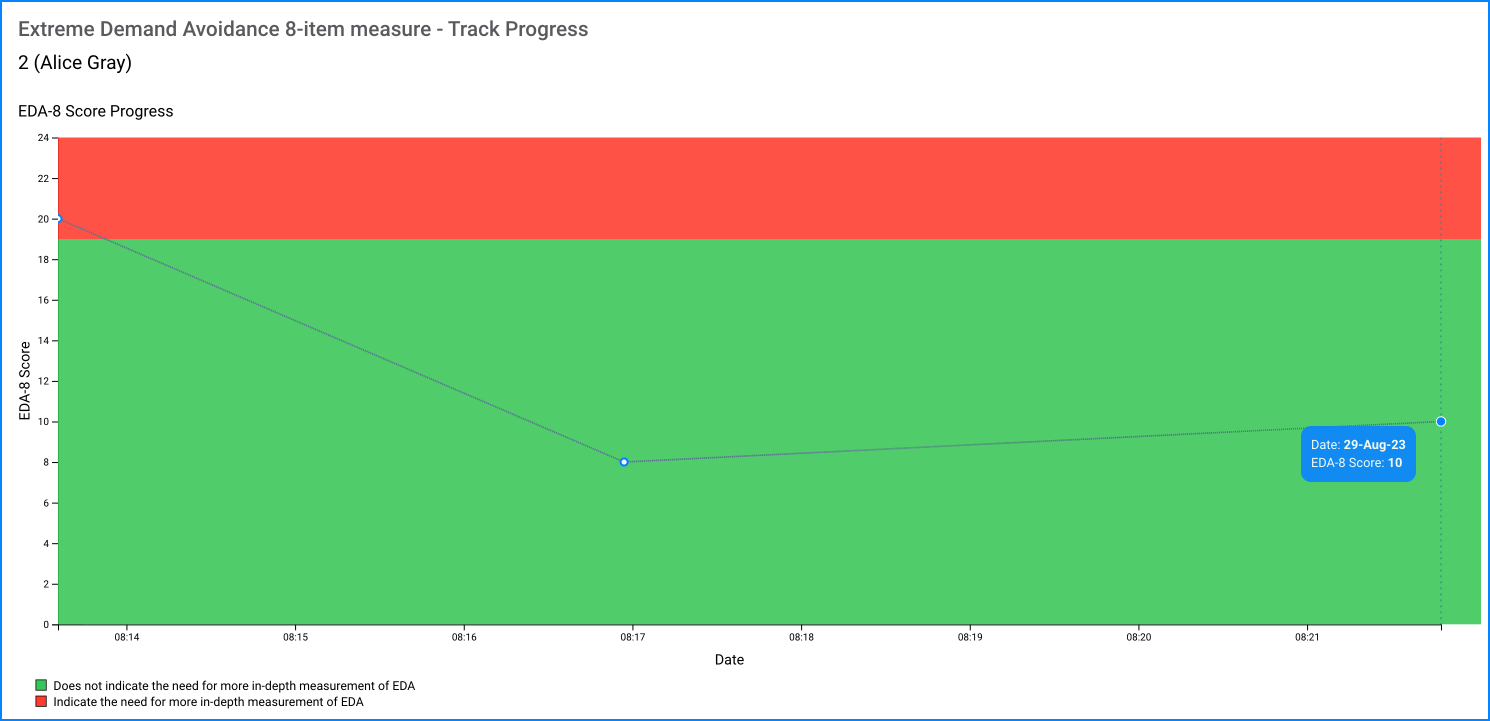Since the questionnaire relies on client's observations, all responses should be verified by the clinician, and a definitive diagnosis is made on clinical grounds taking into account how well the client understood the questionnaire, as well as other relevant information from the client.
Please note that the EDA-8 was designed to measure EDA traits for research purposes, and is not a diagnostic instrument.
Author's research shows that the EDA-8 scale can measure the severity of EDA characteristics well at modest levels, but at high levels, more in-depth measurement is needed.
Scores over 19 could indicate the need for more in-depth measurement of EDA, but do not necessarily suggest a PDA-profile.
This questionnaire asks about a person’s presentation not the causation of this presentation. There are a range of reasons for why a person may present with extreme demand avoidance besides PDA. More in-depth assessment is needed to establish whether a PDA profile underpins demand avoidance behaviours. This would consider early development and any situational factors affecting current behaviour. More information about identifying and assessing for a PDA profile can be found at https://www.pdasociety.org.uk/what-is-pda-menu/identifying-assessing-pda/.




